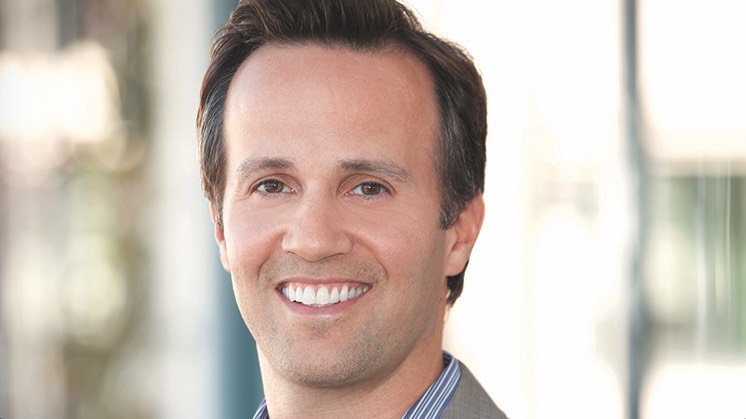The Five Spot: Eric Berger

While Crackle’s upfront presentation last year saw Bryan Cranston cracking jokes from the New York City Center stage, this year’s affair was more demure, with Eric Berger, seated in the lobby of downtown’s Sony Square, walking attendees through the upcoming Crackle slate. Berger also made a point of playing up Crackle’s Sony heritage, a point that may not have been made at previous upfront presentations.
Berger came on board at SPT in 2006 as a vice president of mobile entertainment. Prior to that he was VP of strategic planning at Time Warner Inc.
When he’s not steering Crackle, whose originals include The Art of More, Snatch and Cranston’s own SuperMansion, Berger unwinds by watching Mr. Robot and Silicon Valley (“Those both lean tech — it sounds a little clichéd,” he quipped), along with Homeland and Black Mirror. While in New York for the upfront presentation, Berger took time to speak about what’s next for Crackle with B&C deputy editor Michael Malone. An edited transcript follows.
Jerry Seinfeld’s Comedians in Cars Getting Coffee had nine seasons on Crackle. How big a blow is it for the show to move to Netflix?
We love the show. But we are evolving to a different type of programming that’s focused on game console users and that intersection with streamers — that’s where the biggest piece of our business is. And we’re focused on scripted. We feel like we have a lot of great talent that we’re working with that we weren’t a few years ago, everyone from Dennis Quaid to Bryan Cranston to Rupert Grint. We’re very thankful for the nine great seasons, but also feel good about where we are today.
Was there a sense when Seinfeld left that you’re competing with Netflix and they’re just enormous?
There’s no one channel that people have watched historically. You have a basket of channels and you put together your own mini-bundle. That’s what’s happening in the over-the-top world. You have your equivalent of your broadcast nets, your premiums, your basic cable channels. You want to be in the bundle. To the extent we are ad-supported and free, we’re like a hybrid between a basic cable and broadcast channel, but more basic cable in that we’re focused on a specific demographic and have our programming sensibility.
We believe because we are free we fit into someone’s personal bundle. It’s not a replacement for Netflix or any other streaming service. It’s a complement.
You mentioned in the upfront presentation that Crackle is working closer with PlayStation. Tell me about that.
Our biggest users, our whales, are on consoles. It has been increasing that way for a period of time. The content we program complements that audience and they’re really taking to it. We have one set of technologies to reach one audience across both Crackle as well as PlayStation. It’s all very complementary from the audience perspective.
The smarter way to stay on top of broadcasting and cable industry. Sign up below
Are you considering an ad-free model for users?
We have an ad-free model in Latin America. But we’re very happy in the United States with our advertising model. The market is inundated with [subscription video-on-demand] services and you’re starting to see churn. We don’t want to start to bloat things up with a lot of subscription services. We really like our positioning as the only premium content, ad-supported service out there that’s a complement to whatever else you have going on.
What are the common attributes of programming that succeed on Crackle?
People are looking for escape, for fast pace. What they are not looking for are heavy, complicated story lines. If you need an app to understand the story, or it’s a very slow-burn drama that takes three to four episodes to understand the character, those aren’t the type of shows you’ll see.
This story was revised on May 1 to correct Eric Berger's job title.
Michael Malone is content director at B+C and Multichannel News. He joined B+C in 2005 and has covered network programming, including entertainment, news and sports on broadcast, cable and streaming; and local broadcast television, including writing the "Local News Close-Up" market profiles. He also hosted the podcasts "Busted Pilot" and "Series Business." His journalism has also appeared in The New York Times, The L.A. Times, The Boston Globe and New York magazine.

